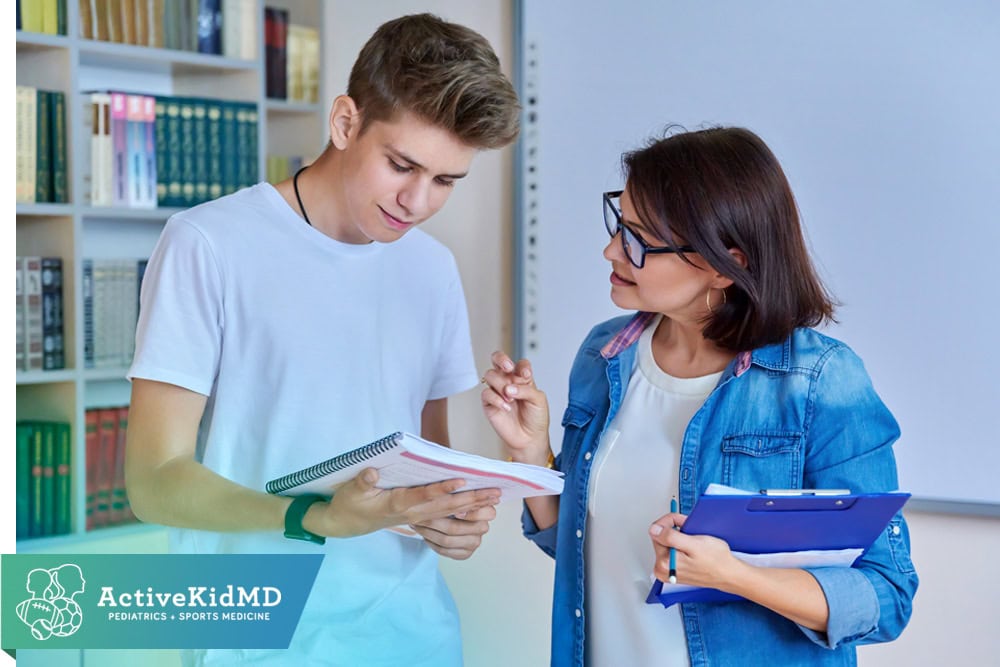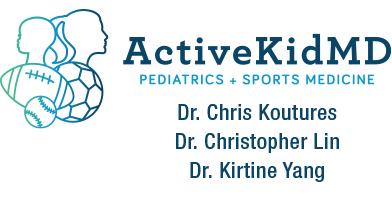Trying to manage make-up work and testing is often one of the greatest challenges for students recovering from a concussion. During this healing period, they face the added pressure of catching up on missed assignments, balancing reduced schedules, and keeping up with ongoing coursework. Well-intentioned post-concussion recommendations, such as attending medical or therapy appointments, shortening school days, limiting screen time, or postponing tests, can unintentionally increase the stress of feeling even further behind.
For many students, the sight of zeros or missing assignments in the online gradebook only adds to the frustration. That stress can slow the healing process. A collaborative approach—where medical professionals, educators, and families work together—can make a big difference. With thoughtful communication and flexible academic planning, students can more effectively recover and regain confidence as they return to full participation in school.
RELATED CONTENT: Concussion Information for Parents and Athletes
DISCLAIMER: The information shared in this post is designed as a general set of recommendations and does not intend to diagnose, manage or treat an individual concussion. Any individual suspected of having a concussion should be evaluated by a provider experienced in the diagnosis and treatment of head injuries.
Collaborative Strategies to Support Academic Recovery
In working with educational colleagues across multiple schools, I’ve seen firsthand how collaboration can ease the transition back to learning after a concussion. Students do best when there is a team approach to their recovery. Below are several strategies that have greatly helped students manage make-up work, reduce stress, and catch up as efficiently as possible during recovery.
I also want to acknowledge and thank Dr. Brenda Eagen-Johnson for her professional expertise and leadership in the field of return-to-learn after concussion. Her guidance has shaped many of the approaches outlined here.
1 Prorate or reduce the overall amount of make-up coursework.
Reducing the total volume of missed work helps prevent students from becoming overwhelmed. This could include limiting the number of problems in a homework set, often starting with doing half of the usual assigned work. We can also ask for a reduction in the number of worksheets needed, book reports done, or essays. For example, if 30 math problems are assigned but completion of 15 will lead to mastery of the concepts, then allow the concussed student to complete the reduced number.
My colleague Dr. Suzy McNulty recommends developing a simple spreadsheet that lists both missed and upcoming assignments in each class. This visual overview helps students, parents, and teachers see the total workload across all subjects, and can often encourage teachers to coordinate and make reasonable workload adjustments.
2 Waive some assignments.
If a paper, book report, or essay doesn’t directly tie into future classwork, eliminating this work can be helpful in overall catch-up efforts.
 3 Allow dictation
3 Allow dictation
Many students have trouble with reading and writing following a concussion due to visual or motor limitations. Encourage them to use dictation tools by speaking directly into a phone or device (the Notes app on Apple products works well) and then have someone review and correct any errors.
RELATED TOPIC: Phone Use Right After Concussion- A Good or Bad Call?
4 Utilize breaks and holidays wisely.
Take advantage of holidays and other days off from school. While no one truly wants to do work when off from school, extended deadlines that include school or holiday breaks have been shown to allow make-up work completion while new material is not being assigned.
5 Modify testing approaches.
When it comes to testing, there are several unique strategies.
a. Eliminate unnecessary or less important make-up tests or quizzes.
b. Allow the student to take ungraded tests or quizzes. The goal here is to learn the material with less stress of having to worry about grades.
c. Combine make-up tests and quizzes so there are fewer overall items needed to catch up.
d. Permit the use of note cards or papers with formulas to assist with lingering recall or memory issues after concussion.
e. Offer verbal or oral testing for students who have demonstrated visual tracking issues that limit prolonged reading and writing.
These adjustments help maintain academic integrity while reducing cognitive strain during recovery.
6 Consider freezing grades at the time of injury.
One other strategy that has been utilized is to freeze the grades at the time of the injury. This allows a period of ungraded make-up work, reducing cognitive stress and allowing a more effective and efficient recovery.
Balancing Fairness and Recovery
Educators may understandably question whether these adjustments compromise fairness or academic rigor. Will the student master enough material to advance to the next chapter, unit, or even grade level? Is it equitable for them to complete less work than their peers?
In my professional opinion, while these concerns are valid, the true intent of these adjustments is to get the make-up work done as quickly as possible, reduce overall cognitive burden, and allow focus on the same current work as other students. The injured student isn’t looking for an advantage, but rather the opportunity to reduce make-up work, get rid of all the incompletes and zeros, and return to “normal.”
The Power of a Team Approach

When key stakeholders share insights with each other and adjust expectations together, students can make-up missed assignments quicker with reduced overall stress and a less complicated overall post-concussion recovery both in and out of the classroom.


 3 Allow dictation
3 Allow dictation
